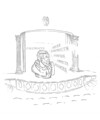According to the CDC surgeon general report, nearly 50-60 percent of Americans have a sedentary lifestyle and roughly 25 percent are completely inactive? From that annoying lower back pain you just can’t seem to figure out or that chronic knee pain you get every time you take a long walk, inactive glutes are often the culprit. People may experience lower back pain and will try everything but glute exercises (Maybe take this part “but glute exercises” out) to alleviate the pain. What they don’t know is that the exercises you should be doing are all centered around strengthening the gluteus muscles and hip attachments to treat and prevent lower back pain and injury. New York City-based fitness trainer and nutrition coach, Leigh Taylor Weissman, is leading the charge on changing the mindset about this important muscle group and how to engage it properly. “The glutes are indirectly responsible for balancing and supporting almost your entire body but specifically initiate and control movement of the hips,” says Weissman. “Our hips connect to our lumbar spine, or lower back, and glutes as well as help control movement in the hamstring and quad (which control extension and flexion of the knee). When we sit all day, our hip flexors can become tight causing weakness or inactivity in the glute muscles. As a result the glutes cannot kick in to help perform their usual job and the hips may take over to compensate. This then causes the lower back to tighten up as the flexors tighten and assist the hip muscles to bear movement they are not strong enough to control. The shift here can cause a myriad of issues from something as small as a pelvic tilt to disk degeneration. The pain domino effect can be endless.” With gyms back open and workout enthusiasts returning to their pre-Covid-19 routines, we talked to Weissman about strength and resistance training and how to prevent and correct inactive glutes and get the most out of each workout.

Trainer Leigh Taylor Weissman does a single arm dumbbell row
What exercises should you be doing to strengthen glutes and hip muscles?
Hip Thrusts to strengthen the gluteus maximus, the largest muscle in your body and the main muscle controlling hip extension.
Bulgarian Split Squats to work the lower glute max which will help with knee stability.
Seated banded abductions or abductions on a machine to work the glute medius, minimus and piriformis—all essential for strong and balanced hips to prevent lower back pain.
Single leg dumbbell deadlifts to work the glutes in the lengthened position to stabilize and strengthen the hamstrings attachment to the knee.
Barbell back squats and Barbell deadlifts to work the glute maximus in the lengthened position. Both exercises work to strengthen the supporting muscles of the hips, knee and back.
Pistol squats to work the rectus femoris one of the muscles responsible for hip flexion and stabilizing the knee.

Trainer Leigh Taylor Weissman does a barbell hip thrust
How can you build significant muscle?
Resistance training causes adaptations in our muscle fibers, one of these being increase in muscle size. It requires a lot, I mean a lot, of calories to build significant muscle in a short period of time, a fact one forgets when the fear of looking like the hulk prevents one from lifting. You can, however, gain a little bit of muscle, shape and tone the glutes, by simply eating intuitively, ensuring you’re getting enough protein and carbohydrates and adding weights to your routine.
How can this kind of workout not only help tone the body but also help with longevity?
Lifting has been shown to improve cardiovascular health, decrease risk of heart attacks and strokes, improve bone density, blood pressure and prevent diabetes and other metabolic disorders. Weightlifting is particularly helpful with those struggling with metabolic issues and weight. One of its greatest strengths, no pun intended, is resistance training’s ability to stabilize blood sugar (our body will put sugar to work pre- and post-exercise, as a means to fuel and repair the body). A new study released by the University of Kentucky College of Medicine and College of Health Sciences found that weight training actually causes fat cells to turn on their fat burning mode on a molecular level. We can now say lifting weight causes us to burn fat.

Trainer Leigh Taylor Weissman does a Bulgarian split squat
How do you know what the right exercises are for you?
First you may want to get an assessment from a glute specialist or physical therapist to analyze if there is an imbalance, why it exists and where it stems from. There may be an obvious indication, but there may not be a tell-tale sign and we want to get to the root of the problem. If you don’t have the time to see a professional, or simply want to begin incorporating glute work to stave off pain and injury, start with a booty band. Banded glute bridges off the floor, clam shells and seated banded hip abductions are great exercises to incorporate into your daily routine. If you have a desk job and lying on the floor isn’t an option, carve some time out of your day to do banded work in your chair. I would also encourage foam rolling your quads and lower back to release any tension in the hip flexors.






































